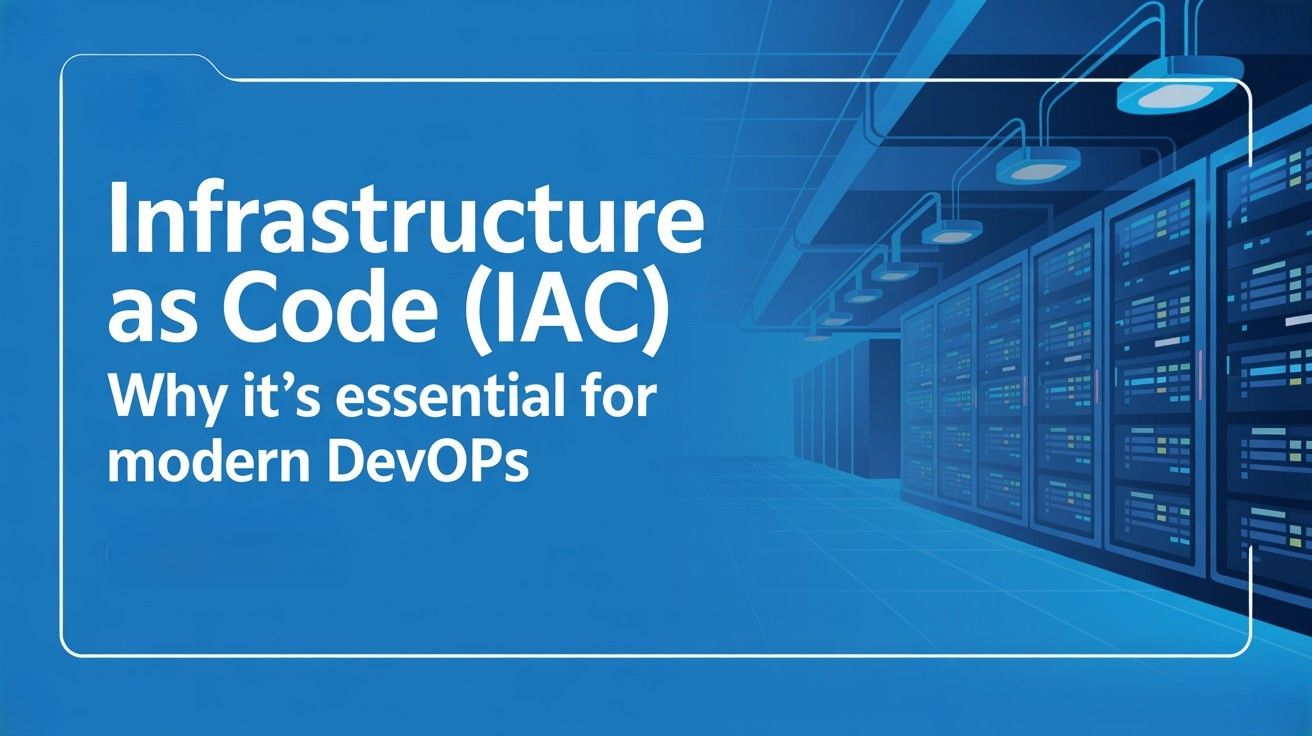Infrastructure as Code (IaC): Why It’s Essential for Modern DevOps

In today’s fast-paced tech world, where agility and efficiency are paramount, Infrastructure as Code (IaC) has emerged as a cornerstone of modern DevOps practices. But what exactly is IaC, and why is it indispensable for organizations striving to stay ahead in the digital transformation race? Let’s dive into the details! 🌟
What is Infrastructure as Code (IaC)? 🛠️
At its core, Infrastructure as Code (IaC) is the process of managing and provisioning IT infrastructure through code rather than manual processes. Instead of physically setting up servers, networks, or storage, IaC allows teams to define their infrastructure using high-level descriptive programming languages. These configurations are stored in version control systems, ensuring repeatability, consistency, and automation. 💻
For instance:
- Imagine deploying hundreds of applications daily. IaC automates this process by spinning up infrastructure dynamically and scaling it based on demand—without human intervention12.
Why IaC is Essential for DevOps Teams 💡
DevOps thrives on automation and collaboration. IaC complements this philosophy by treating infrastructure like software code, enabling teams to:
- Automate Provisioning: No more manual setup! IaC ensures infrastructure is provisioned automatically, saving time and reducing errors13.
- Version Control: Just like application code, infrastructure configurations can be tracked and updated through version control systems like Git25.
- Consistency Across Environments: IaC eliminates discrepancies between development, testing, and production environments by ensuring uniform configurations35.
- Rapid Deployment: DevOps pipelines integrated with IaC enable faster application deployment cycles with fewer roadblocks35.
Key Benefits of IaC 🌟
Here’s why businesses are embracing IaC:
| Benefit | Description |
|---|---|
| Repeatability | Deployments are consistent across environments, reducing errors5. |
| Scalability | Scale infrastructure effortlessly to meet growing demands15. |
| Cost Efficiency | Automation reduces operational costs by minimizing manual effort5. |
| Environment Drift Detection | Detect and correct inconsistencies in infrastructure configurations5. |
| CI/CD Integration | Seamlessly integrates with DevOps pipelines for automated deployments5. |
| Early Testing | Test applications in production-like environments early in the development cycle5. |
IaC Tools & Technologies 🔧
Several tools have become synonymous with IaC implementation:
- Terraform: A popular open-source tool for declarative infrastructure management.
- AWS CloudFormation: Ideal for managing AWS resources programmatically.
- Ansible: Simplifies configuration management through YAML-based playbooks.
- Pulumi: Combines programming languages with cloud resource provisioning.
These tools empower teams to codify infrastructure efficiently while maintaining flexibility across multiple cloud platforms5.
Best Practices for Implementing IaC ✅
To maximize the benefits of IaC, follow these best practices:
- Use Declarative Languages: Define the desired state of your infrastructure without specifying step-by-step instructions25.
- Integrate Version Control: Store all configurations in repositories like Git for tracking changes and collaboration25.
- Automate Testing & Monitoring: Continuously test infrastructure changes in staging environments before production deployment3.
- Adopt Modular Code Design: Break down configurations into reusable modules for scalability and simplicity5.
Real-World Use Cases 🌍
IaC has transformed industries by enabling:
- Cloud Deployments: Easily manage multi-cloud environments using configuration templates like JSON or YAML3.
- Infrastructure Testing: Create mirrored environments for testing updates without disrupting production systems3.
- Monitoring & Security: Track logs and alerts at the infrastructure level to ensure compliance and reliability3.
Why Your Organization Needs IaC Now ⏳
Without IaC, organizations risk inefficiencies such as manual errors, slow deployments, and inconsistent environments—all detrimental in a competitive market. By adopting IaC:
- Teams can focus on innovation rather than repetitive tasks.
- Businesses gain agility to respond to market demands faster.
- Infrastructure becomes a strategic asset rather than a bottleneck.
In short, IaC isn’t just a tool—it’s a transformation that aligns IT operations with modern business needs. 🌐
Final Thoughts 💭
As DevOps continues to evolve, Infrastructure as Code will remain at its heart—empowering teams to deliver faster, safer, and more reliable software solutions. Whether you’re scaling your startup or optimizing enterprise workflows, embracing IaC is no longer optional; it’s essential! 🚀
So, are you ready to unlock the full potential of your DevOps journey with Infrastructure as Code? Let’s code your way to success! 💻✨
